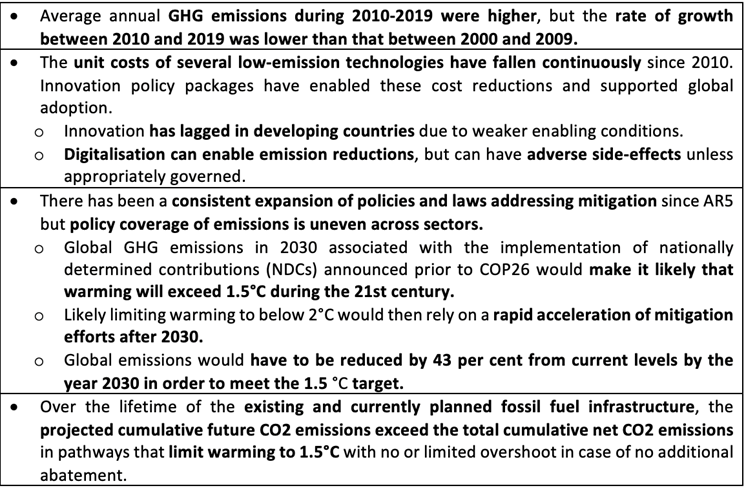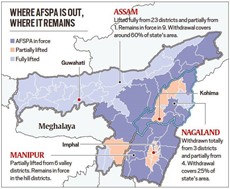Wednesday, 6th April 2022
WHO’s Air Pollution Data
In News
The World Health Organization’s air quality database released ahead of World Health Day on 7 April, says 99% of world’s population breathes poor-quality air.
About the News
- The WHO air quality database compiles data on ground measurements of annual mean concentrations of particulate matter and nitrogen dioxide.
- The data compiled in this database is used as input to derive the Sustainable Development Goal Indicator 11.6.2, Air quality in cities, for which WHO is the custodial agency.
- For the first time ground measurements of nitrogen dioxide (NO2) in addition to the traditional measurement of particulate matter with diameters equal or smaller than 10 microns (PM10) or 2.5 microns (PM2.5) have been included.
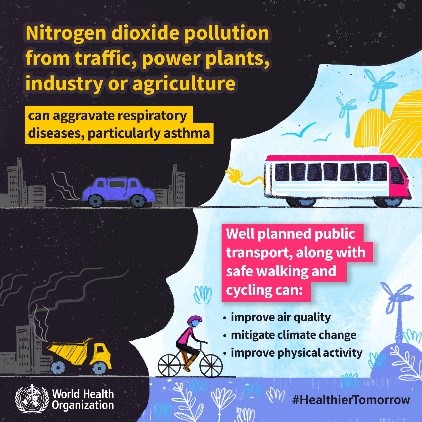
Important Findings
- An astonishing 99 per cent of the world’s population breathes polluted air that exceeds internationally approved limits, with negative health impacts kicking in at much lower levels than previously thought.
- 2 million people die from exposure to outdoor air pollution, in addition to the 3.8 million whose deaths are linked to household smoke produced by dirty stoves and fuels.
- According to the WHO, low and middle-income countries still experience greater exposure to unhealthy levels of particulate matter compared to the global average, but nitrogen dioxide patterns are different, showing less difference between high and low and middle-income countries.
- Nitrogen dioxide originates mainly from human-generated burning of fuel, such as through automobile traffic, and is most common in urban areas.
- Exposure can bring respiratory disease such as asthma and symptoms such as coughing, wheezing and difficulty in breathing, and more hospital and emergency-room admissions
- The highest concentrations were found in the eastern Mediterranean region.
- Particulate matter has many sources, such as transportation, power plants, agriculture, the burning of waste and industry – as well as from natural sources such as desert dust.
- India and China have recorded high levels of particulate matter in the air.
- Particulate matter, especially PM2.5, is capable of penetrating deep into the lungs and entering the bloodstream, causing cardiovascular, cerebrovascular (stroke) and respiratory impacts. It even impacts other organs.
The road to recovery:
A number of governments are taking steps to improve air quality, but WHO is calling for a rapid intensification of actions to:
- Adopt or revise and implement national air quality standards according to the latest WHO Air Quality Guidelines
- Monitor air quality and identify sources of air pollution
- Support the transition to exclusive use of clean household energy for cooking, heating and lighting
- Build safe and affordable public transport systems and pedestrian- and cycle-friendly networks
- Implement stricter vehicle emissions and efficiency standards; and enforce mandatory inspection and maintenance for vehicle
- Invest in energy-efficient housing and power generation
- Improve industry and municipal waste management
- Reduce agricultural waste incineration, forest fires and certain agro-forestry activities (e.g. charcoal production)
- Include air pollution in curricula for health professionals and providing tools for the health sector to engage.
Sources:
Heat waving causing crop damage
In News
According to Meteorological department, the maximum temperatures for March this year has been the highest ever recorded for the month in 122 years.
About the News
- The reason for unusually hot month has been attributed to the absence of active western disturbance over north India and of any major easterly system over south India, causing subdued rainfall and very less thunderstorm activities over most parts of the country.
- Based on this, the Union Agriculture Ministry is expected to revise downward its all-time-high production estimates of 111.32 million tonnes (mt) for wheat.
- An early higher temperature of nearly 40 degrees Celsius has led to early pollination (transfer of pollen from the male anther to the female stigma part of the same flower) this time.
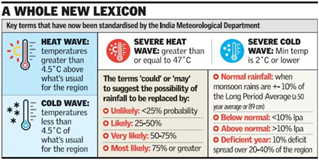
What are the major issues?
- Sudden spike: Sudden spike in temperatures from the second half of March, which scientists fear may impact grain yields in many wheat-growing areas of India.
- Impact on yield: Maximum temperatures if crossing 35 degrees or 40 degrees by the month-end will impact per acre average yields.
- Excess rain in January followed by terminal heat stress – high March temperatures forcing premature ripening and drying of wheat grains have led to poor yields per acre this time as against the year 2021.
- Early sowing: Plantation under HDCSW-18, a high-yielding variety suitable for sowing early i.e., between October 8 and October 25 have been impacted.
- Crop cycle: The crop in Punjab, Haryana, Madhya Pradesh and Rajasthan, which is largely timely or early sown, may not be affected The problem would be with the moderately late (mid- to end-November) to late (December onwards) sown wheat in most parts of Uttar Pradesh and Bihar.
- Higher price realisation: The only consolation is that farmers have realised a higher price for their crop – Rs 6,400-6,400 per quintal versus Rs 5,200-5,300 last March-April – at the local mandi market.
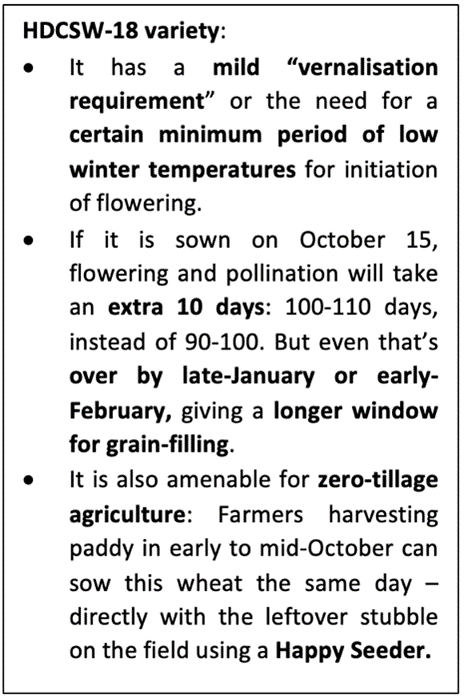
Sources:
Mission Integrated Bio-refineries
In News
The Union government has recently launched a futuristic (Public Private Participation) PPP mode initiative for ‘Clean Energy’ with the full launch of “Mission Integrated Bio-refineries”.
About the News:
This initiative is a part of the India’s dedicated efforts in the backdrop of its commitment to reaching net-zero emissions by 2070 and meeting the electricity requirements from renewable energy sources by 2030.

Mission Integrated Bio-refineries:
- What is it? It is a mission that unites a dynamic and result-oriented partnership of countries, international organizations, academic institutions and civil society to accelerate innovation for renewable fuels, and chemicals for a low-carbon future.
- Objectives and Goal: The mission aims to advance sustainable biorefining pathways and technologies to support the development and commercialization of bio-based fuels, chemicals and materials, by also considering process energy demands.
- This will support de-risking new and emerging technology,while improving the cost-competitiveness of bio-based alternatives, especially biofuels.
- It will also accelerate Clean Energy solutions through Public -Private Alliances.
- The goal of the mission is to Develop and demonstrate innovative solutions to accelerate the commercialization of integrated biorefineries, with a target of replacing 10% of fossil-based fuels, chemicals and materials with bio-based alternatives by
- Initiatives involved: This is the sixth Mission launched by Mission Innovation, and involves initiatives focused on clean hydrogen, green power systems, net zero shipping, carbon dioxide removal and urban transitions.
- Mission Innovation is a global initiative to catalyse action and investment in research, development and demonstration to make clean energy affordable, attractive and accessible to all this decade.
- It was launched alongside the Paris Agreement in 2015.
- Members: The Mission is Co-led by India and the Brazil and Canada are core members, and the European Commission and the United Kingdom are supporting members.
- Need of the Mission: Such an initiative is the need of the hour as GHG emissions from the transport and chemicals sectors account for nearly one-third of global emissions with transport alone responsible for one-fourth of them, which are projected to increase by 2050.
- Therefore, there is a need for low-carbon and renewable alternativesto fossil-based fuels, chemicals, and materials, particularly in hard-to-abate sectors such as, long-haul transportation, and industry.
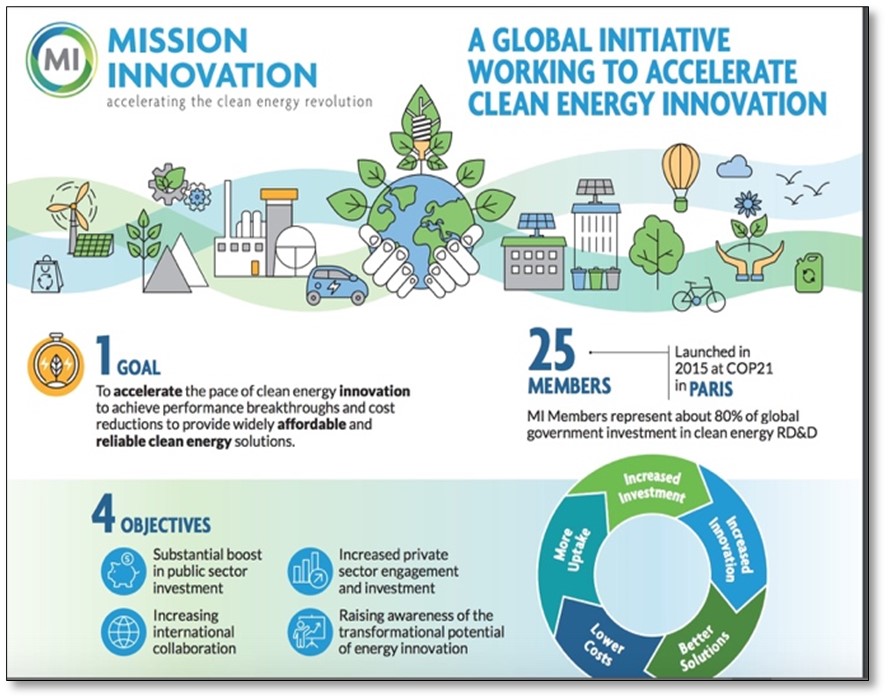
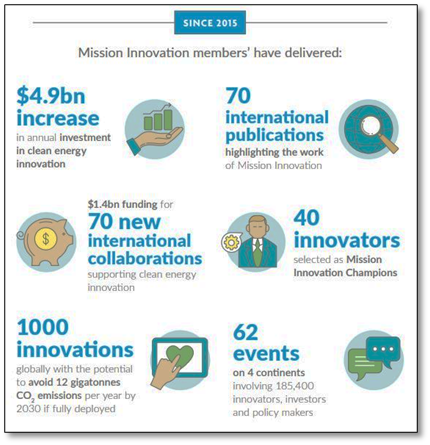
Source:
- Series of Steps taken to Promote Clean Energy through Public-Private Alliances
- Union Minister Dr Jitendra Singh launches “Mission Integrated Bio-refineries” to accelerate clean energy
- Union Minister Dr. Jitendra Singh launches a major futuristic PPP mode initiative for 'Clean Energy' with the full launch of “Mission Integrated Bio-refineries” to accelerate Clean Energy solutions through Public -Private Alliances.
Image source:
International Day of Sport for Development and Peace
April 6, has been declared as the International Day of Sport for Development and Peace by the United Nations General Assembly in 2013, to celebrate the contribution of sports and physical activity to education, human development, healthy lifestyles and a peaceful world. Sport has historically played an important role in all societies, be it in the form of competitive sport, physical activity or play. Sport and play are human rights that must be respected and enforced worldwide; sport has been increasingly recognized and used as a low-cost and high-impact tool in humanitarian, development and peace-building efforts, not only by the UN system but also by non-governmental organizations (NGOs), governments, development agencies, sports federations, armed forces and the media. In recognition of sport’s broad influence, the global theme of IDSDP 2022 is, “Securing a Sustainable and Peaceful Future for All: The Contribution of Sport,” which creates an opportunity for the Day’s celebrations to promote the use of sport as a tool to advance human rights and sustainable development.
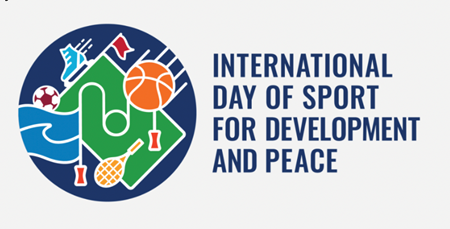
Sources:
The Indian Antarctic Bill
In News
Nearly 40 years after India first signed the Antarctic Treaty, the government has brought in a draft Indian Antarctic Bill-2022 to regulate and monitor activities at its research stations in the frozen continent.
Importance of Antarctica
- Antarctica and the surrounding Southern Ocean are key drivers of Earth’s oceanic and atmospheric systems.
- About 90 per cent of Earth’s ice is found here, and 70 per cent of all available fresh water is locked up in the Antarctic ice sheet.
- If melted, this would raise sea levels by 58 metres.
- The Southern Ocean encircling the continent, south of 60°S latitude, is the only ocean that encircles the globe uninhibited by land masses.
- The Southern Ocean connects the 3 main ocean basins (Atlantic, Pacific and Indian) and creates a global circulation system that is largely driven by the Antarctic Circumpolar Current (ACC)—the world’s largest current.
- The ACC flows from west to east around Antarctica and generates an overturning circulation that transports vast amounts of heat. The ACC also takes up a significant amount of carbon dioxide (CO2) from the atmosphere.
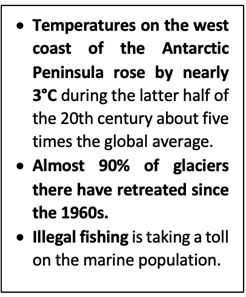
- The Southern Annular Mode (SAM), also known as the Antarctic Oscillation (AAO), describes the north–south movement of the westerly wind belt that circles Antarctica, dominating the middle to higher latitudes of the southern hemisphere.
- The SAM is characterized by a poleward intensification (equatorward weakening) of the mid-latitude westerly winds that extends from the surface to the upper jet, in its positive (negative) phase.
- It has an important influence on rainfall over high-latitude countries.
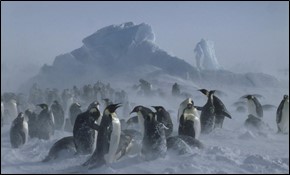
- Antarctic environment provides valuable information about climate change.
- Antarctic continental ice contains climate records extending back more than 800,000 years, which have been obtained from ice cores.
- Moreover, the Antarctic environment and biosphere are highly sensitive indicators of present-day environmental change.
The Indian Antarctic Bill, 2022
- The Bill seeks to give effect to the Antarctic Treaty, the Convention on the Conservation of Antarctic Marine Living Resources, and the Protocol on Environmental Protection to the Antarctic Treaty.
- It also seeks to protect the Antarctic environment and regulate activities in the region.
Key features of the Bill include:
- Applicability: The provisions of the Bill will apply to any person, vessel or aircraft that is a part of an Indian expedition to Antarctica under a permit issued under the Bill. Areas comprising of Antarctica include:
- the continent of Antarctica, including its ice-shelves, and all areas of the continental shelf adjacent to it, and
- all islands (including their ice-shelves), seas, and air space south of 60°S latitude.
- Central committee: The central government will establish a Committee on Antarctic Governance and Environmental Protection. The Committee will be chaired by the Secretary of the Ministry of Earth Sciences and include 10 members from different ministries.
- The functions of the Committee include granting permits for various activities, implementing and ensuring compliance of relevant international laws for protection of Antarctic environment, obtaining and reviewing relevant information provided by parties to the Treaty, Convention, and Protocol, and negotiating fees/charges with other parties for activities in Antarctica.
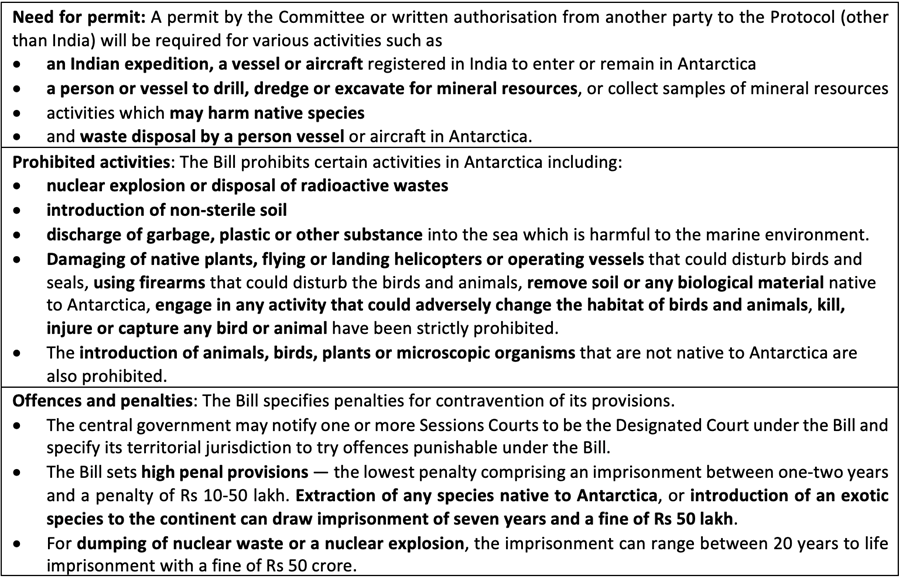
The Antarctic Treaty (1959)
- The Antarctic Treaty was signed in December 1959 and came into force in 1961. From the 12 original parties in 1959, membership of the treaty has now grown to 54 countries.
- India has a consultative status since 1983 when it signed the treaty.
- The Treaty covers the area south of 60°S latitude and remains in force indefinitely.
- The Antarctic Treaty and a set of related international agreements, known collectively as the Antarctic Treaty System, provide the framework for governance of the Antarctic region.
- The Treaty parties meet each year at the Antarctic Treaty Consultative Meeting.
- They have adopted over 300 recommendations and negotiated separate international agreements, of which three are still in use:
- Convention for the Conservation of Antarctic Seals (1972)
- Convention on the Conservation of Antarctic Marine Living Resources (1980)
- Protocol on Environmental Protection to the Antarctic Treaty (1991)
- These, together with the original Treaty provide the rules which govern activities in Antarctica. Collectively they are known as the Antarctic Treaty System (ATS).
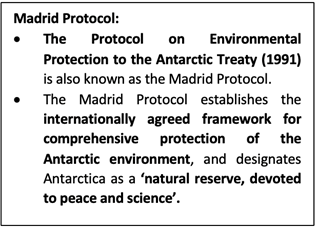


Conclusion: There is growing concern over preserving the pristine Antarctic environment and ocean around Antarctica from exploitation of marine living resources and human presence in the region. The proposed law will aim to provide a harmonious policy framework for India’s Antarctic activities through a well-established legal mechanism; facilitate activities of the Indian Antarctic programme, including management of Antarctic tourism and sustainable development of fisheries.
Question: Discuss the need for legislation on Antarctica. How will the provisions of the Antarctic Bill enable the safety of the region?
Sources:
- Explained: The Indian Antarctic Bill introduced in Lok Sabha:
- The Indian Antarctic Bill, 2022:
- India in Antarctica:
- The Antarctic Treaty Explained:
- The Antarctic Treaty System:
- Antarctic Oscillation:
- Antarctic governance:
- Why remote Antarctica is so important in a warming world:
- The Antarctic:
- Sea Ice Advisory using Earth Observation Data for Ship Routing during Antarctic Expedition:
Mt Everest from the ISS
This is image of Mt. Everest that is captured from the International Space Station (ISS). The picture posted by the National Aeronautics and Space Administration (Nasa) on Instagram, shows a whole new look of the highest mountain in the world. An astronaut aboard the International Space Station took this near-nadir (almost straight down) photograph of Mount Everest. The Everest keeps growing – approximately 1 centimeter per year due to the progressive uplift of the crust caused by the convergence of the Indian and Eurasian tectonic plates.

Source:
Global Capability Centres (GCCs)
- Context: Multinational companies are planning to expand their global capability centres (GCCs) in India this year.
- GCCs, also known as global in-house centres or captives, are offshore units of large multinationals such as General Electric, Texas Instruments, Citigroup and American Express, performing technology operations.
- India is home to more than 1,200 GCCs employing close to 1 million people.
- There are several factors driving the establishment of new GCCs in India which include:
- Increased demand
- availability of high-quality talent at scale in India
- maturity of the GCC model
- GCC’s aim to build strategic capabilities to advance their digital journeys,
- government incentives, regulations and policies supporting GCC setup in metro and non-metro cities, like the GIFT City in Gujarat for BFSI companies, are seen to be the key drivers of growth.
- In addition to these, India presents a unique and favourable ecosystem, with appropriate government regulations and policies, opportunities for partnerships with a vibrant ecosystem in academia and startups, and an abundance of digitally skilled talent.
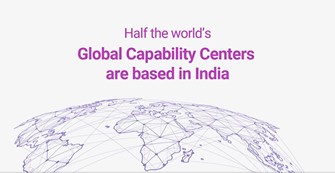
Source:
- Multinational firms plan slew of global capability centres this year
- Future of Global Capability Centres (GCCs) in India:
Image source:
Shree Mandira Parikrama Project
- Context: The Archaeological Survey of India (ASI) has recently asked the Odisha government to tweak its Shree Mandira Parikrama Project (SMPP).
- SMPP is a massive beautification project around the Jagannath temple in Puri.
- The Rs 800-crore project will create an unobstructed 75-metre corridor around the Meghanada Pacheri (outer wall of the Shree Jagannath Temple).
- Shree Jagannath Temple, which is a 12 th century temple is one of the char dhams (four most sacred pilgrimage places) for Hindus, the other three being Badrinath, Dwaraka and Rameswaram.
- It was constructed by King Anatavarman Chodaganga Deva of the Eastern Ganga Dynasty and was called the “White Pagoda”.
- As per the Ancient Monuments and Archaeological Sites and Remains (AMASR) Act, 1958, no new construction can take place within a radius of 100 meter of a monument which is treated prohibited zone.
- The area up to 200 meters is known as regulated zone and the permission of the National Monument Authority (NMA) is compulsory for any construction.
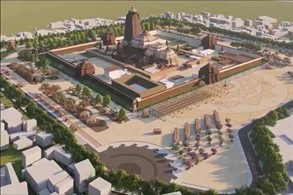
Source:
- ASI wants tweaking in Odisha govt.’s beautification plan around Jagannath temple
- Shree Mandira Parikrama Project: Odisha kicks off Rs 800-crore Jagannath Temple heritage corridor redevelopment
Image source:
Summer Action Plan
- Context: The Delhi government has recently announced a 14 point summer action plan to tackle pollution in Delhi.
- As 31% of the air pollution in Delhi comes from local sources, the plan focuses on local measures.
- Both long-term and immediate solutions will be implemented from April to September under the plan on the lines of the winter action plan.
- The plan will focus on a wide range of domains such as:
- road dust and Industrial pollution
- open burning of garbage
- fires at landfill sites
- increasing green cover on the roadside
- rejuvenation of water bodies, parks,
- tree transplantation monitoring,
- phasing out of single-use plastics, development of an eco-waste park, urban farming etc.
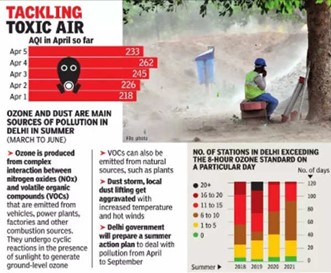
Source:
- Delhi to have summer action plan to fight pollution: Gopal Rai
- Summer action plan to tackle toxic air in Delhi
Image source:
Poppy Production
- Context: Taliban has recently announced a ban on poppy production in Afghanistan.
- Poppies are bright red flowers that produce opium which is used to make heroin.
- They are the main source of income for millions of small farmers and day labourers in Afghanistan who can earn upwards of $300 a month harvesting them and extracting the opium.
- Afghanistan is the world's largest producer of opium and in 2021, before the Taliban takeover, the country produced more than 6,000 tons of opium which is believed to potentially yield 320 tons of pure heroin.
- Afghanistan produces more opium than all opium-producing countries combined and in 2021 was the 6th straight year of record opium harvests.
- Nearly 80% of heroin produced from Afghan opium production reaches Europe through Central Asia and Pakistan.
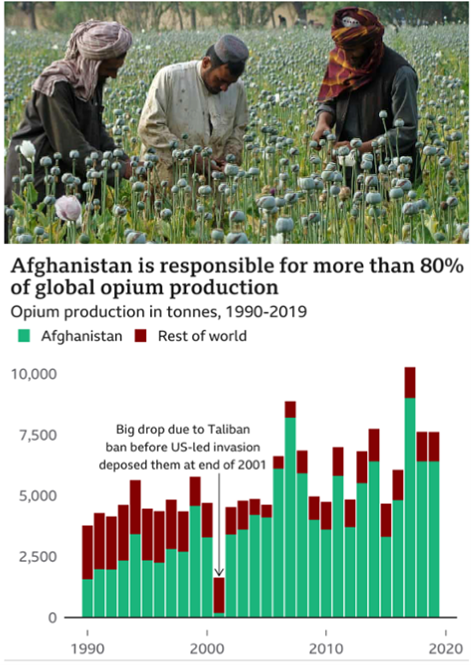
Source:
- Taliban announce ban on poppy production in Afghanistan
- Taliban announces ban on opium production in Afghanistan
Image source:
The CUET mandate warrants cautious implementation: TH
Essence: As per the author, the decision to make Central University Entrance Test (CUET) mandatory for admitting students in the undergraduate programmes of the Central University has caught the universities unprepared. Thus, universities are finding it difficult to provide essential information such as which language to choose, what 7 subjects from 27 domain knowledge subjects to choose from for admission to different courses, etc.
CUET is advantageous as it might widen students' academic choices and save them the cost, the hassle and the inconvenience of attempting multiple tests. However, it would undermine the importance of board examinations and distract students from their studies in schools and disadvantageous to students from the State Boards.
As per the author, nearly 95% of the seats in higher education are in the self-financed private and public funded State universities and higher education is in the concurrent list. Thus, CUET should have been evolved in consultation with the stakeholders as envisaged in the National Education Policy (NEP) 2020. The author recommends expediting the establishment of the Higher Education Commission of India (HECI), as prescribed by the NEP 2020 as it contains General Education Council (GEC), a consultative mechanism for the speedy and thoughtful implementation of the NEP.
Why should you read this article?
- To know about the difficulties universities are facing to implement CUET.
- To know about the advantages and disadvantages of CUET.
- To know the authors recommendations regarding CUET.
Source:
A merger of HDFC and HDFC Bank promises benefits to entities and consumers, could trigger consolidation in the sector: IE
Essence: Country’s largest private sector bank HDFC bank and leading mortage firm HDFC have merged together to create a financial giant. The immediate trigger for the move was changes in the regulatory ecosystem for non-banking financial companies which brought it closer to the way banks are regulated.
Experts are of the view that a merger will be a win-win affair for both the entities and their consumers. The new entity will gain because of increased efficiency because of streamlining of activities and cost rationalization. Consumers may gain because of expectation of reduction of cost of fund for the entity which is likely to be passed on to consumers. However, with merger, SLR and CRR requirements of the new entity will increase along with simultaneous increase in priority sector lending requirements. This will create a financial burden on the entity.
This merger further validates the view that India’s financial industry is on the path of consolidation and country’s financial landscape is set to change dramatically.
Why should you read this article?
- To understand implications of merger of HDFC with HDFC Bank on different stakeholders.
Source:
Russia vs the West a clash of civilizations- IE
Essence: The editorial roots its discussion on Samuel Huntington’s book “Clash of Civilization” which states that the future conflicts would be fought based on cultural fault lines between civilizations than between political ideologies. These complex civilizations are geographically clustered ethno-religious groups. He predicted the Islamic world to be antagonistic towards the western culture and foresaw the Russian and Indian civilization as “swing civilizations”. Ukraine was seen as a rift between civilizations.
The editorial speaks about the Russian investments towards Europe since 1991- private/public finances indicated towards its greater participation in European economies- fuel, finances, infrastructure, pipelines, people to people ties, etc. All of them could have ensured that the swing state Russia sided towards European partners, away from Chinese influence. However, the four wars Russia has been a part of lately, Georgia, Syria, Crimea and Ukraine war have reflected the distancing of Russia from Europe. Russia wants cultural regions close to its borders to be associated and affiliated more towards itself rather than western world. These opportunities for Ukraine to act as a neutral state have been lost by European leader.
India is in a strategic position and freedom to carve its diplomacy with all stakeholders in the present conflict. The conflict has only resulted into weakening of rupee, increase in fuel prices, costlier imports and flight of capital from India’s economy. India’s interest lies in rapidly de-escalating the war and not in becoming a “swing state”. India must partner with like-minded democracies, notwithstanding their culture, religion, or ethnicity.
Why should you read this article?
- To know the impact of clash of civilization between Russia and Ukraine on western world.
- To understand India’s non swing state response to the clash.
Source:
Sustainable Building Blocks
Background
- Climate change is all pervasive and hence required an all-round solution.
- Hence, finding alternatives for day-to-day activities is is the way forward to various innovations to combat climate change.
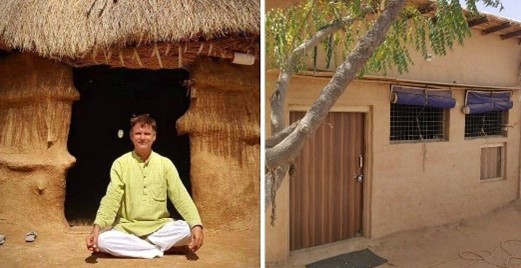
About the Sustainable Building Blocks
- Dr Shivdarshan Malik, from Haryana, has developed Vedic Plaster and Gocrete Bricks by reviving traditional mode of construction.
- He was disturbed with the adverse changes that were visible around his neighbourhood since his childhood.
- He prepared Vedic Plaster in 2006 after some research on its durability and eco-friendly This plaster keeps the house cooler as it does not absorb external heat.
- Then taking inspiration from USA’s hempcrete, he went on to develop Gocrete using cow dung, which can prevent about 70 per cent heat from entering the house.
- The composition of Gocrete has to be customised as per the region depending upon its climate and other physical attributes.
Quote: “On climate change, we often don't fully appreciate that it is a problem. We think it is a problem waiting to happen.” - Kofi Annan
Source:
Share the article
Get Latest Updates on Offers, Event dates, and free Mentorship sessions.

Get in touch with our Expert Academic Counsellors 👋
FAQs
UPSC Daily Current Affairs focuses on learning current events on a daily basis. An aspirant needs to study regular and updated information about current events, news, and relevant topics that are important for UPSC aspirants. It covers national and international affairs, government policies, socio-economic issues, science and technology advancements, and more.
UPSC Daily Current Affairs provides aspirants with a concise and comprehensive overview of the latest happenings and developments across various fields. It helps aspirants stay updated with current affairs and provides them with valuable insights and analysis, which are essential for answering questions in the UPSC examinations. It enhances their knowledge, analytical skills, and ability to connect current affairs with the UPSC syllabus.
UPSC Daily Current Affairs covers a wide range of topics, including politics, economics, science and technology, environment, social issues, governance, international relations, and more. It offers news summaries, in-depth analyses, editorials, opinion pieces, and relevant study materials. It also provides practice questions and quizzes to help aspirants test their understanding of current affairs.
Edukemy's UPSC Daily Current Affairs can be accessed through:
- UPSC Daily Current Affairs can be accessed through Current Affairs tab at the top of the Main Page of Edukemy.
- Edukemy Mobile app: The Daily Current Affairs can also be access through Edukemy Mobile App.
- Social media: Follow Edukemy’s official social media accounts or pages that provide UPSC Daily Current Affairs updates, including Facebook, Twitter, or Telegram channels.

